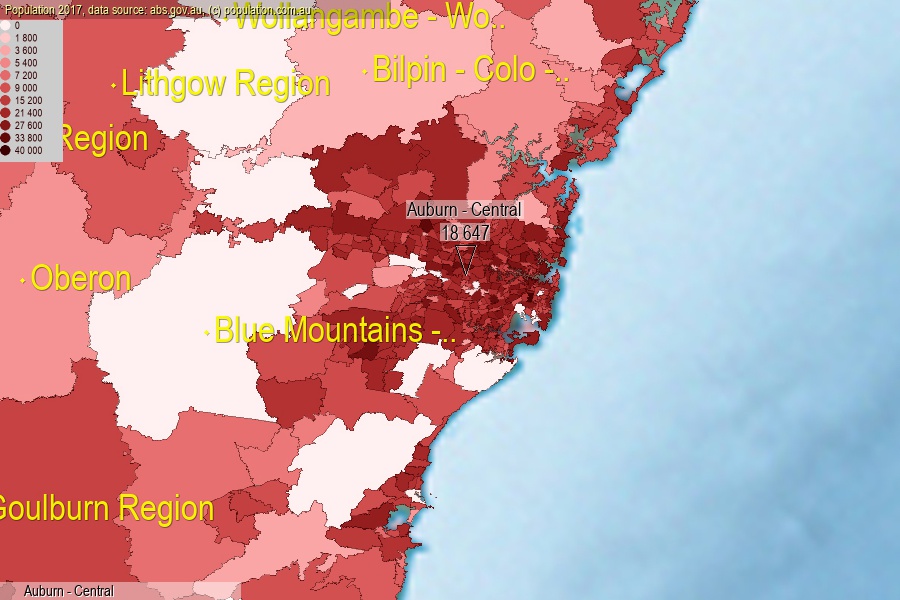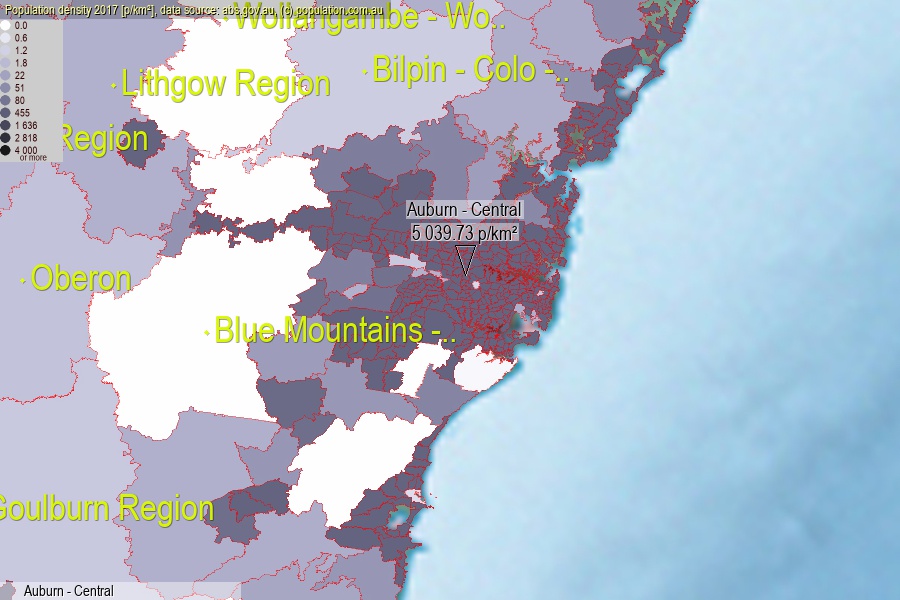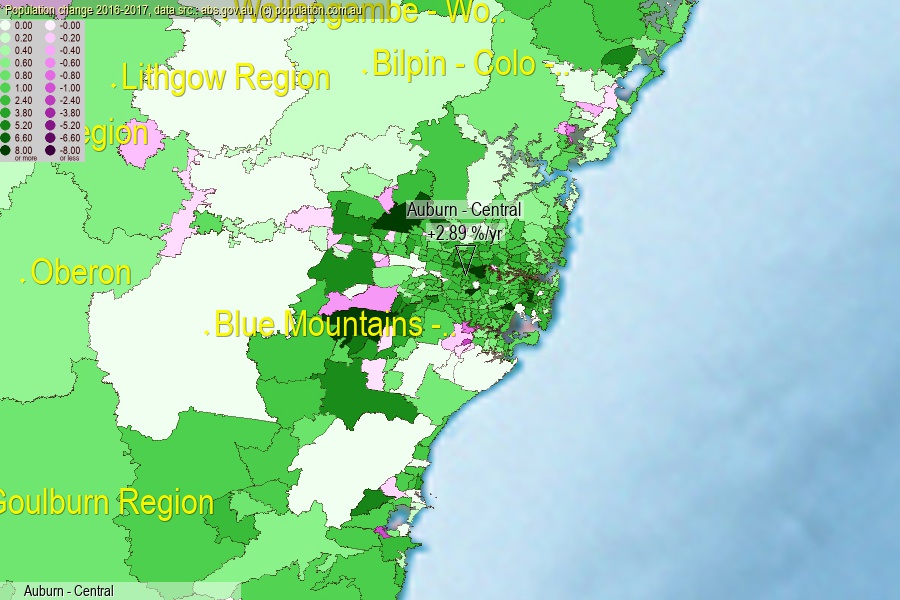 population.com.au
population.com.auLast official estimated population of Auburn - Central (as Statistical Area Level 2) was 18 647 people (on 2017-06-30)[2]. This was 0.08% of total Australian population and 0.234% of NSW population. Area of Auburn - Central is 3.70 km², in this year population density was 5 039.73 p/km² . If population growth rate would be same as in period 2016-2017 (+2.89%/yr), Auburn - Central population in 2025 would be 23 413. [0]



Click to enlarge. Auburn - Central is located in the center of the images.
Population [people], population density [p./km²] and population change [%/year] [2]
View borders » (new window) [4]
[2001-2002] +1.78 %/Yr.
[2002-2003] +5.87 %/Yr.
[2003-2004] +4.26 %/Yr.
[2004-2005] +2.75 %/Yr.
[2005-2006] +2.90 %/Yr.
[2006-2007] +2.02 %/Yr.
[2007-2008] +4.03 %/Yr.
[2008-2009] +2.61 %/Yr.
[2009-2010] +0.98 %/Yr.
[2010-2011] +0.22 %/Yr.
[2011-2012] +1.60 %/Yr.
[2012-2013] +2.03 %/Yr.
[2013-2014] +1.91 %/Yr.
[2014-2015] +1.86 %/Yr.
[2015-2016] +1.92 %/Yr.
[2016-2017] +2.89 %/Yr.
[0] Calculated with linear interpolation from officially estimated population
[1] Read more about SA2 and Australian Statistical Geography Standard (ASGS) on abs.gov.au
[2] Population data from Australian Bureau of Statistics (Population and density: 2017; change: 2016-2017)
[3] Digital Boundaries: Australian Statistical Geography Standard (ASGS) 2016.
[4] Border coordinates are simplifyed using Ramer-Douglas-Peucker algorithm.